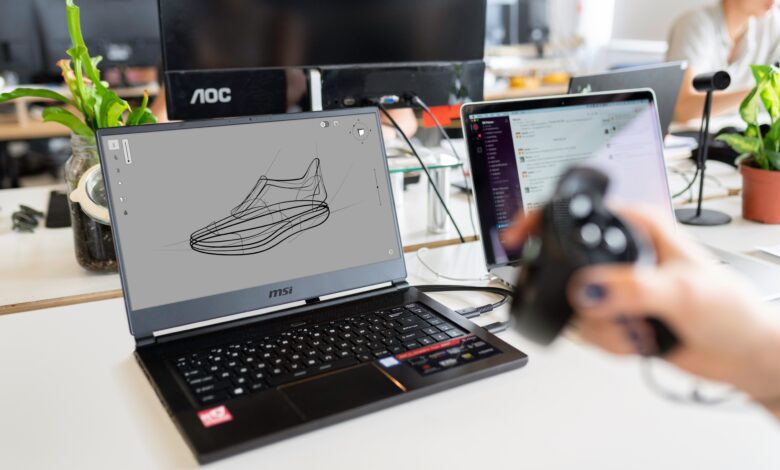
Virtual Reality (VR) is making waves across various industries, and real estate is no exception. By providing immersive experiences and revolutionizing the way properties are showcased and sold, VR is reshaping the real estate landscape. From virtual tours to advanced visualization techniques, the integration of Virtual Reality is creating significant opportunities for buyers, sellers, and agents alike. This article explores the profound impact of Virtual Reality on real estate, focusing on virtual tours, enhanced property visualization, training and education for real estate professionals, and the future potential of this cutting-edge technology.
1. Virtual Tours: A Game Changer in Property Viewing
One of the most transformative applications of Virtual Reality in real estate is the virtual tour. Traditionally, prospective buyers had to physically visit multiple properties to make an informed decision. This process is time-consuming and often inconvenient, especially for those relocating from different cities or countries. Virtual Reality solves this problem by allowing buyers to explore properties from the comfort of their own homes.
A virtual tour uses 360-degree photography and VR headsets to create a fully immersive experience. Buyers can navigate through rooms, examine details, and get a genuine feel for the space without stepping foot on the property. This not only saves time but also broadens the scope of potential buyers, as they can explore properties remotely. Furthermore, virtual tours can be available 24/7, providing greater flexibility for busy clients.
Additionally, virtual tours can highlight properties in their best light. Realtors can create staged environments, showcasing the potential of each property, which might be difficult to visualize in an empty or poorly presented space. This method can lead to quicker decision-making and potentially faster sales.
2. Enhanced Property Visualization: Beyond the Basics
While virtual tours are a significant leap forward, Virtual Reality offers even more advanced property visualization techniques. One such innovation is the use of VR to present properties still under construction or even at the conceptual stage. With Virtual Reality, developers can create highly detailed 3D models of their projects, allowing buyers to experience and evaluate a property before it is built.
This technology is particularly beneficial for off-plan sales, where buyers purchase properties before construction is completed. VR can provide a realistic representation of what the finished property will look like, including layout, finishes, and even the view from different windows. This level of detail can instill confidence in buyers and drive pre-sales.
Moreover, Virtual Reality can offer customizable visualizations. Buyers can experiment with different design choices, such as wall colors, flooring options, and furniture arrangements, to see how their personal preferences would look in the space. This interactivity enhances the buying experience and helps clients make more informed decisions.
3. Training and Education for Real Estate Professionals
Virtual Reality is also revolutionizing the way real estate professionals are trained and educated. Traditional training methods often involve classroom-based instruction and on-the-job learning, which can be time-consuming and less effective. VR offers an immersive and interactive alternative that can enhance learning outcomes.
Through Virtual Reality, agents can simulate real-life scenarios, such as property showings, negotiations, and client interactions, in a controlled environment. This hands-on approach allows agents to practice and refine their skills without the pressure of real-world consequences. They can receive immediate feedback and guidance, accelerating their learning process.
Additionally, VR can be used for continuing education. The real estate market is constantly evolving, and agents need to stay updated on the latest trends and technologies. VR-based training modules can provide up-to-date information on market analysis, legal regulations, and new tools, ensuring that agents remain competitive and knowledgeable.
4. The Future Potential of Virtual Reality in Real Estate
The integration of Virtual Reality in real estate is still in its early stages, but the future holds immense potential. As VR technology continues to evolve, it is likely to become even more sophisticated and accessible. Here are some exciting possibilities on the horizon:
- Virtual Reality for Market Analysis: Advanced VR applications could analyze market trends and provide predictive analytics, helping buyers and investors make more informed decisions. By visualizing data in a 3D environment, complex market dynamics can be understood more intuitively.
- Augmented Reality (AR) Integration: Combining VR with AR can enhance property viewings further. AR can overlay digital information onto the physical world, providing additional context and details during a virtual tour. For example, AR could display property history, neighborhood statistics, or potential renovation ideas in real-time.
- Virtual Reality Social Spaces: Imagine a VR platform where buyers, sellers, and agents can interact in a virtual environment. Such platforms could host virtual open houses, where multiple buyers explore a property simultaneously and ask questions to the agent in real-time. This social aspect could add a new dimension to property marketing.
- Environmental Simulations: VR could simulate different environmental conditions to show how a property performs under various circumstances, such as different weather conditions or times of the day. This can provide a more comprehensive understanding of the property’s strengths and weaknesses.
Conclusion
Virtual Reality is undeniably transforming the real estate industry by providing innovative solutions that enhance the buying and selling process. From immersive virtual tours to advanced property visualization and professional training, VR is making real estate transactions more efficient, engaging, and informed. As technology continues to advance, the potential applications of Virtual Reality in real estate will expand, offering even more sophisticated tools and experiences. Embracing Virtual Reality not only improves current practices but also paves the way for a future where the boundaries between the virtual and physical worlds blur, creating endless possibilities for the real estate market.




